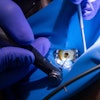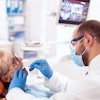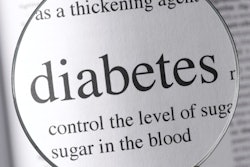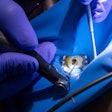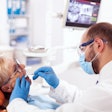
Up to a third of dental patients do not accurately report their preexisting medical conditions, such as diabetes or high blood pressure, to clinicians, according to a new study. Treatment planning and patient outcomes may be affected without accurate information, the authors noted.
Underlying medical conditions were misreported in about 15% to 30% of dental patient records, researchers reported in a study published on September 27 in JDR Clinical & Translational Research.
"Policies that support the integration of medical and dental records would meaningfully increase the quality of healthcare delivered to patients, particularly those dental patients with underlying medical conditions," wrote the authors, led by Shawn Adibi, DDS, of the department of general practice and dental public health at the University of Texas Health Science Center at Houston School of Dentistry.
Evidence shows a connection between oral health and systemic health, but dental care continues not to be a part of primary medical care, and, in many cases, dental records are not integrated with patient medical records, the authors noted. Since inaccurate information poses problems for dental clinicians, their study aimed to determine the degree to which patients' misreport hypertension and diabetes.
The researchers analyzed the medical records of a diverse group of patients previously seen at the University of Texas Physicians outpatient practice and treated at the university's dental school. About 1,000 patients were identified with either one or both medical conditions using nonintegrated records contained in the organizations' databases.
Misreporting rates for preexisting conditions were significant, the researchers found.
| Patients who misreported preexisting medical conditions | ||
| Condition | No. of patients | Percentage misreported |
| Diabetes | 410 | 15% |
| Hypertension | 905 | 29% |
Approximately 300 patients were previously diagnosed with both diabetes and hypertension, and about 65% accurately reported both conditions to clinicians. The rest of the reporting varied.
| Misreporting rates for patients with diabetes and hypertension | |
| Misreported conditions | Percentage |
| Misreported diabetes but accurately reported hypertension | 19% |
| Misreported hypertension but accurately reported diabetes | 13% |
| Misreported hypertension and diabetes | 4% |
The misreporting was likely not deliberate but likely due to other factors, including length of time since diagnosis, a lack of knowledge of the oral side effects contributable to the conditions, and experience of stigma. Also, human error may have contributed to information being left out of electronic records, the authors wrote.
As for limitations, the retrospective study did not allow for the evaluation of time between medical and dental visits. Future studies should focus on the effect of time between medical and dental visits as a factor that may have contributed to record discrepancies, they noted.
Misreporting gaps can be closed with an integrated healthcare system, the authors concluded.
"A standard medical and dental history content that is used by all health professionals to reduce diagnostic and communication errors among disciplines should be considered as a means to improve the quality of total patient healthcare delivery," they wrote.


